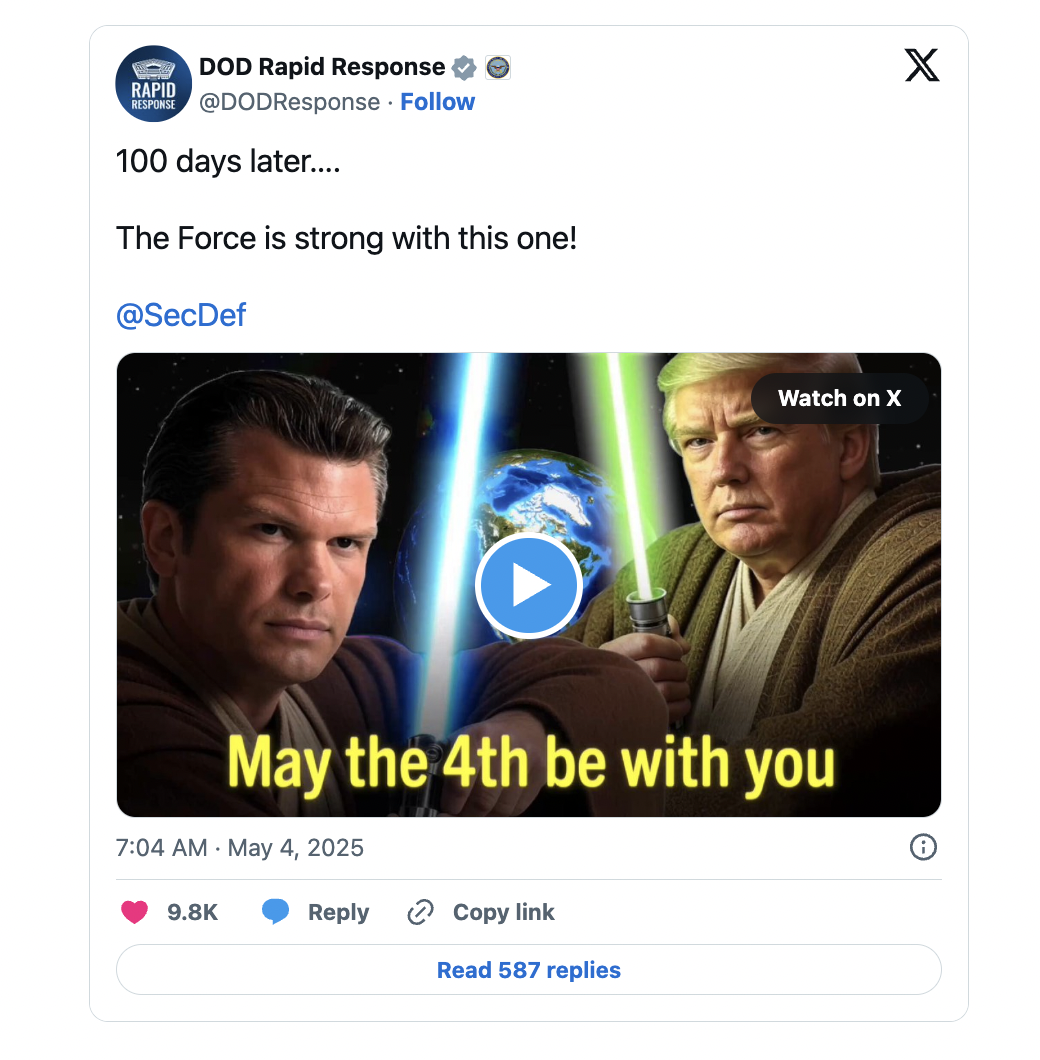
This week’s question comes to us from Megan Butler:
What is the most dangerous inconsequential stupid opinion?
MSG is bad for you.
I grew up in Philadelphia during the 1970s, which was a great time and place for stupid opinions. We moved a lot, for reasons I don’t particularly want to get into at this moment, but at one point we found ourselves living next door to a Chinese restaurant. Now, this wasn’t a fancy place. It was a take-out joint. You ordered at the window, and sat down at the one table by the window, enjoying your cigarette, until your food came out, and off you went. The only other thing in the front room of the restaurant was a Mr. Do! video game cabinet. And this being the 70s, and Philadelphians being who they are, the place became known as Mr. Do’s, which meant the owner obviously became Mr. Do. (I shamefully have to report that if I once knew Mr. Do’s real name—and I can’t with any certainty claim that I did—that information is now lost in the mists of time. So I will continue referring to him as Mr. Do. Respectfully.)
Mr. Do also had a couple of kids the same age as me and my idiot brothers, and kids the same age tend to gravitate towards each other. Especially when we’re all broke and there isn’t much else to do. Even more especially because they had a key to the Mr. Do machine and would load it up with free credits when their dad wasn’t paying attention. To this day, I am still very good at Mr. Do.
This also meant that every once in a while their dad would hand out free bowls of fried rice to all the kids. When he fed his kids, he fed us. To this day, Mr. Do’s fried rice is the best fried rice I’ve ever had. No doubt, this has a lot to do with nostalgia, but it was also because Mr. Do fried his rice properly. With MSG.
Right around the same time as we were enjoying our Mr. Do!, our friendship, and our fried rice, stories started circulating about how MSG was bad for you. Those stories eventually ended up not just in print (which was the style of the time), but on the local news, and eventually the national news as well. Don’t eat food cooked with MSG! It was a whole thing. In fact, it’s still a thing. Just last week I passed a Chinese restaurant in San Francisco that still has a “NO MSG” sign in the window, albeit in a touristy part of town. Real city people know the truth.
Here’s the thing: there aint shit wrong with MSG. Monosodium Glutamate is a flavor enhancer. Like salt, but it’s actually lower in sodium. It’s been around forever. It occurs naturally in tomatoes and some cheeses. And yes, it’s used in a lot of Chinese cooking. But it’s far from exclusive to Chinese cooking. (McDonald’s uses it in chicken nuggets.) And yes, some people are sensitive to MSG, but honestly you have to spoon it like peanut butter to get sick from it. (I’m not a doctor. This isn’t medical advice.)
Let’s look at another thing that was happening at the time. Remember, this was the ‘70s. The United States had just finished a brutal war in Vietnam, with a little carpet-bombing in Cambodia on the side. This led to a lot of displaced people coming to America, because we’d made their countries unlivable, and destabilized most of Southeast Asia in the process. (Fuck Henry Kissenger forever.) And because immigrants are amazing, they got here and figured out how to survive. Some of them opened restaurants. (Fun fact about Mr. Do, Chinese restaurant chef and sole proprietor: he was Vietnamese.)
This upset some very racist Americans, including—but very much not limited to—the Portuguese-Americans that shared my neighborhood with Mr. Do. Including my parents, who had no shortage of commentary about how much time I spent hanging out with “those kids.” (Every immigrant group wants to shut the immigration door behind them. We saw that in the last election.)
And while very racist Americans felt safe using more direct racist language in certain circumstances, sometimes it became useful to wrap it in a veneer of an inconsequentially stupid opinion. Mind you, this was all before the advent of both cable and the internet, where anyone can, and does, post their racist opinions for all to see, and outrage fuels engagement, which makes idiots like Mark Zuckerberg and Elon Musk richer. This was still a time when you got your news from credible old white men with gravitas on the evening news. (Not in itself unproblematic.) But it’s easier to get Walter Cronkite to do a story on MSG being bad for you, than to get him to say “whoa man, there’s suddenly too many Southeast Asians in America!”
A gentler way to do a racism. The net result is the same.
For the record, your question is amazingly complex and hard to parse, which I admired. In fact, Erika and I discussed it at length trying to figure it out. So here’s how I’m defining it: what’s a stupid thing you were told, that sounded like it was about a minor thing, but was actually about a much darker thing. Which made me think of all the things I was told as a kid, that ended up being absolute bullshit, but many of which we still carry around with us to this day. So inconsequential that we haven’t even bothered to revisit many of them.
A few years after the MSG crackdown, my friends and I (now proper weed-smoking, army-surplus-jacket-wearing teens), were embroiled in the whole “disco sucks” bullshit. Which our young idiot (and still plenty racist) selves told one another was simply a way to declare your allegiance to rock music, in the face of this upstart disco thing. In hindsight, I now understand the whole thing was both racist and homophobic. Disco very much being a celebration of gay and black and brown cultures. Again, a thing that terrified the whites, especially once the occasional white kid got drawn to it.
You’re spending too much time with “those kids.”
I do question the use of the word inconsequential in your question, because of course none of these things are inconsequential. The genius of the inconsequential stupid opinion is that it feels inconsequential. We don’t need to examine it very hard. We let it pass on through, to where it finds a crack in your foundation and takes root. Growing there, unbothered, unexamined. A sneaky piece of what makes you you. You don’t even think about it. That’s what makes it dangerous.
MSG is bad for you.
Disco sucks.
Boys don’t cry.
There’s a term called a “thought-terminating cliché” that I want to talk about. And to be honest, I’m not sure yet if “dangerous inconsequential stupid opinions” fall into that space, but they’re certainly neighbors, and they’ve definitely spent at least one Thanksgiving together. A thought-terminating cliché is a form of loaded language, presented as folk wisdom. It’s meant to short-circuit critical thinking. And it’s a fantastically effective way to get a piece of insidious thought into your head by framing it in a way that’s almost fun. Cutesy.
Let’s agree to disagree.
It is what it is.
When you spell either of these examples out, and strip away the folksy charm you’re left with some dark shit:
There is nothing you can say that will change my mind, because I’m no longer listening to reason.
Why should we expend any effort in attempting to change something when it’s far easier to go along with it.
The most important lesson Orwell tried to teach us is that the first thing fascists take from us is language. They will change it to meet their needs. They will make us think that peace is war and left is right. Trump’s very effective repetition of the phrase “fake news” did more to destroy our trust in journalism than any other reason, of which there are indeed many. Anything we disagree with can now be rebuffed with a hand wave and saying “fake news.”
We’re now arguing whether NPR and PBS are or aren’t biased, while FOX News sits in the corner sipping on a mint julep, enjoying the show.
White supremacy is now just “DEI hires.” A regime (see how I’m not calling them a government?) that’s erasing the history and accomplishments of Black Americans now just rebuffs it all with a hand wave while half-heartedly muttering “DEI hire.” And we will then spend weeks and months debating whether someone was actually a DEI hire or not, when we really need to remember and explicitly state that what we are seeing is white supremacy.
Language is important. And it turns out that the more stupid and more inconsequential it seems, the deeper it burrows into our heads.
And that is very dangerous indeed.
Many years ago, long after I’d moved out of Philadelphia—and supposedly grown up—I was on my way to dinner with a friend. We’d settled on Chinese and she picked a spot. I met her out front where she was already looking at the menu taped to the front window. After scouring the menu for what I thought was critical information, I turned to her and said “Hey, do you know if this place uses MSG?”
In her infinite kindness she replied, “Man, that’s fucking racist.”
And she was right. We ended up having a really nice dinner. It tasted great. Although still not as good as Mr. Do’s fried rice.
🙋 Got a question for me? Ask it!
📚 Buy our books! We write good books, and sell them ourselves. Because publishing… well, it is what it is.
🔍 Learning how to ask questions, such as “Hey, is this racist?” is a fantastic skill. Come learn how to do it in Erika’s Research Workshop!
🎼 The new Tunde Adebimpe is VERY MUCH worth your time.
🍉 Please donate to the Palestinian Children’s Relief Fund.










